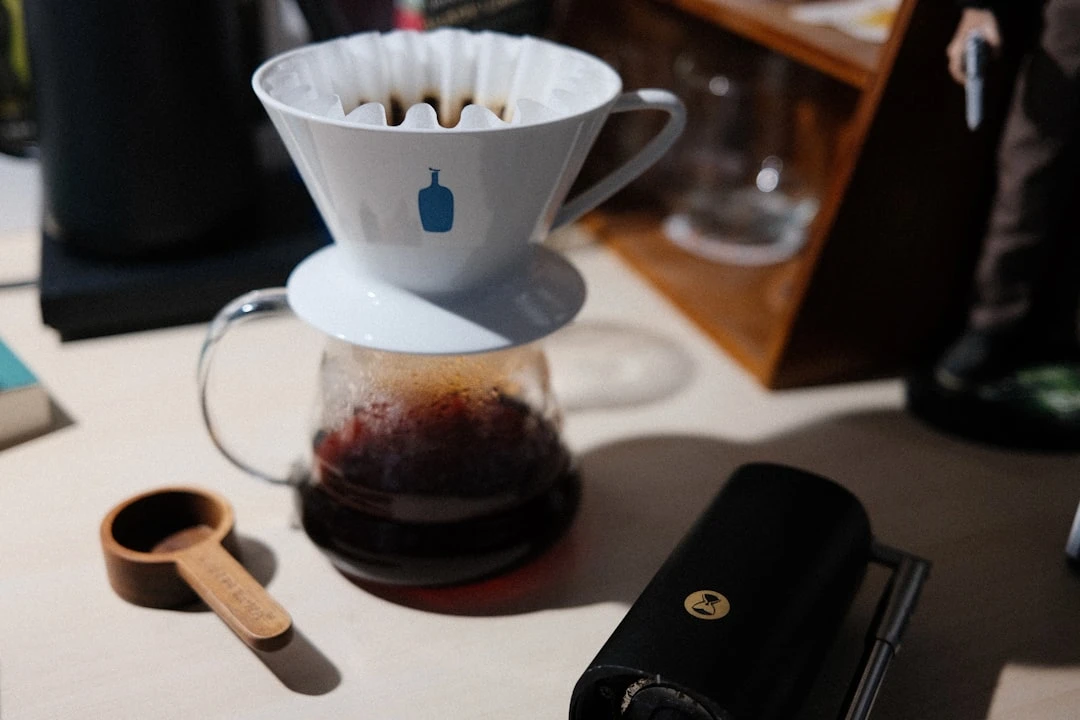Lungo vs Americano: What's the Difference Between These Coffee Drinks?

Ever stood at a coffee shop counter, staring at the menu, wondering what the heck the difference is between a lungo and an americano? You're definitely not alone! I've been there countless times, and honestly, it took me years to really understand these two popular espresso-based drinks.
Both drinks might look similar in your cup - they're both black coffee with a lighter color than straight espresso. But here's the thing: the way they're made creates completely different flavor experiences. The lungo uses a longer extraction time with the same amount of water, while the americano dilutes espresso with hot water after brewing.
Understanding these differences isn't just coffee snobbery - it's about finding the drink that actually tastes good to you. Whether you're trying to recreate café favorites at home or just want to order with confidence, knowing the ins and outs of lungo versus americano will change how you think about coffee.
What is a Lungo Coffee?
A lungo is basically espresso's patient cousin. The name literally means "long" in Italian, and that's exactly what it is - a long espresso shot. Instead of the typical 25-30 second extraction time for regular espresso, a lungo takes about 45-60 seconds to pull.
Here's where it gets interesting: you're using the same amount of coffee grounds as a regular espresso (usually 18-20 grams), but you're letting twice as much water pass through them. This extended extraction time pulls out different compounds from the coffee beans, creating a unique flavor profile that's quite different from both espresso and americano.
The result? You get about 2-3 ounces of coffee instead of the typical 1-2 ounces from a regular espresso shot. But it's not just about volume - the taste changes dramatically too. The longer extraction pulls out more bitter compounds from the coffee, which some people love and others find overwhelming.
I remember the first time I ordered a lungo thinking it would be like a mild espresso. Boy, was I wrong! The intensity caught me off guard, but after a few sips, I started appreciating the complex flavors that you just can't get with other brewing methods.
What is an Americano Coffee?
An americano takes a completely different approach to creating a longer coffee drink. Instead of messing with extraction time, you simply add hot water to freshly brewed espresso shots. It's like taking a regular espresso and giving it a nice warm bath.
The typical ratio is one or two shots of espresso mixed with 6-8 ounces of hot water, though this can vary based on your taste preferences and the coffee shop's standards. The beauty of an americano lies in its simplicity - you're not changing the espresso extraction process at all, just diluting it to create a drink that's closer to drip coffee in strength.
The story goes that American soldiers during World War II found Italian espresso too strong for their taste, so they started adding hot water to make it more like the coffee they were used to back home. Whether that's true or not, the name stuck, and the americano became a staple in coffee shops worldwide.
What I love about americanos is their versatility. You can adjust the strength by changing the water-to-espresso ratio, and you still get that distinct espresso flavor without the intensity. It's like having the best of both worlds - espresso character with drip coffee approachability.
Key Differences in Brewing Methods
The brewing methods for these two drinks are where the magic happens, and understanding them will help you appreciate why they taste so different.
For a lungo, everything happens at the espresso machine during extraction. You're using the same grind size as regular espresso (fine), the same amount of coffee (18-20 grams typically), and the same brewing pressure (9 bars). The only thing that changes is time and water volume. Instead of stopping the shot at 25-30 seconds, you let it run for 45-60 seconds, extracting about twice as much liquid.
This extended extraction is crucial because it pulls different compounds from the coffee at different stages. The first part of the extraction gets the sweet, acidic compounds, while the later stages pull more bitter, astringent elements. That's why a lungo has such a complex, often bitter flavor profile.
An americano, on the other hand, involves two separate steps. First, you pull a normal espresso shot (or two) using standard timing and ratios. Then, you add hot water - usually between 160-180°F - to the espresso. Some baristas add the water first, then the espresso (called a "long black" in some places), while others pour the espresso first. The order can slightly affect the crema and presentation, but the taste remains essentially the same.
The key difference is that with an americano, you're not over-extracting the coffee beans. You're simply diluting an already perfectly extracted espresso, which preserves more of the original espresso flavor characteristics while making it less intense.
Taste Profile Comparison
The taste differences between lungo and americano are pretty dramatic once you know what to look for. It's like comparing two different beverages that happen to be made from the same starting ingredients.
A lungo typically has a more bitter, complex flavor profile. The extended extraction pulls out tannins and other compounds that create a somewhat harsh, intense taste. However, this isn't necessarily a bad thing - many coffee lovers appreciate the boldness and complexity. The longer extraction also tends to bring out more earthy, woody notes from the coffee beans. You'll often taste less of the bright, acidic notes that make espresso so distinctive.
I've noticed that lungos can vary significantly depending on the coffee beans used. Light roasts often become unpleasantly bitter with the extended extraction, while medium to dark roasts tend to handle the longer brewing time better. The flavor can be described as robust, full-bodied, and sometimes a bit overwhelming for those used to milder coffee drinks.
An americano, by contrast, maintains much more of the original espresso character. Since you're not over-extracting the beans, you preserve the sweet, acidic, and fruity notes that make good espresso shine. The hot water dilution makes these flavors more approachable without eliminating them entirely. It's like turning down the volume on espresso rather than changing the song entirely.
The mouthfeel is different too. Lungos tend to feel heavier and more syrupy, while americanos have a cleaner, more refreshing quality that's closer to drip coffee. This makes americanos more versatile for different occasions - I can drink them throughout the day, while lungos feel more like a special occasion or morning-only drink.
Caffeine Content Analysis
The caffeine content in these drinks is more nuanced than you might expect, and it's one of those topics where coffee myths run wild.
A lungo typically contains more caffeine than a regular espresso shot because of the extended extraction time. While a standard espresso shot has about 63-68mg of caffeine, a lungo can have anywhere from 80-100mg. The longer the water is in contact with the coffee grounds, the more caffeine gets extracted. However, there's a point of diminishing returns - most of the caffeine is extracted in the first 30 seconds, so the extra caffeine in a lungo isn't dramatically higher.
An americano's caffeine content depends entirely on how many espresso shots are used. A single-shot americano will have the same caffeine as one espresso shot (63-68mg), while a double-shot americano will have around 126-136mg. Since most coffee shops use two shots for their americanos, you're typically getting more caffeine than a lungo.
Here's where it gets interesting: the dilution in an americano doesn't affect the total caffeine content, just the concentration. You're spreading the same amount of caffeine over more liquid, which can actually make the caffeine absorption slower and more sustained compared to the concentrated hit from espresso or lungo.
From a practical standpoint, if you're looking for maximum caffeine efficiency, a double americano usually wins. But if you prefer a smaller volume of liquid with decent caffeine content, a lungo might be your better choice. I've found that the sustained energy from an americano works better for my morning routine than the quick intensity of a lungo.
Which Should You Choose?
Choosing between lungo and americano really comes down to your personal taste preferences and coffee habits. Let me break down some scenarios to help you decide.
Choose a lungo if you enjoy bold, intense flavors and don't mind a bit of bitterness. If you're someone who drinks their coffee black and appreciates the complexity that comes with extended extraction, lungo might be perfect for you. It's also great if you want a smaller volume of coffee but still want more than a regular espresso shot. I've found that lungo pairs well with rich desserts or as an after-dinner drink when you want something strong but not overwhelming in volume.
Go with an americano if you prefer cleaner, more balanced flavors that still have espresso character. It's ideal for people transitioning from drip coffee to espresso-based drinks, or anyone who wants the flexibility to adjust strength by changing the water ratio. Americanos are also more forgiving - they're harder to mess up than lungos, which can become bitter if the extraction goes too long.
Consider your daily coffee routine too. Americanos are more versatile throughout the day and work well as a replacement for drip coffee. They're refreshing, easy to drink, and won't overwhelm your palate. Lungos are more of a specific experience - they demand attention and work best when you can sit and appreciate the complexity.
If you're making coffee at home, americanos are definitely easier to master. You just need to nail your espresso technique and add hot water. Lungos require more precision in timing and can be tricky to get right consistently.
Conclusion
The battle between lungo and americano isn't really about which one is better - it's about understanding what each brings to your coffee experience. Both drinks showcase espresso in different ways, and both have their place in the coffee world.
A lungo offers intensity and complexity through extended extraction, creating a bold, sometimes challenging drink that rewards adventurous coffee drinkers. An americano provides accessibility and balance, delivering espresso character in a more approachable format that works for various situations and taste preferences.
My advice? Try both! Order them at different coffee shops, make them at home if you have an espresso machine, and pay attention to how they make you feel. Your preference might change based on your mood, the time of day, or even the season. I've gone through phases where I was obsessed with lungos, and other times when americanos were my daily go-to.
Remember that coffee is deeply personal. What matters most is finding drinks that you genuinely enjoy, not what's trendy or what other people prefer. Whether you end up in team lungo or team americano, you'll be exploring the wonderful world of espresso-based beverages with a better understanding of what you're drinking.


